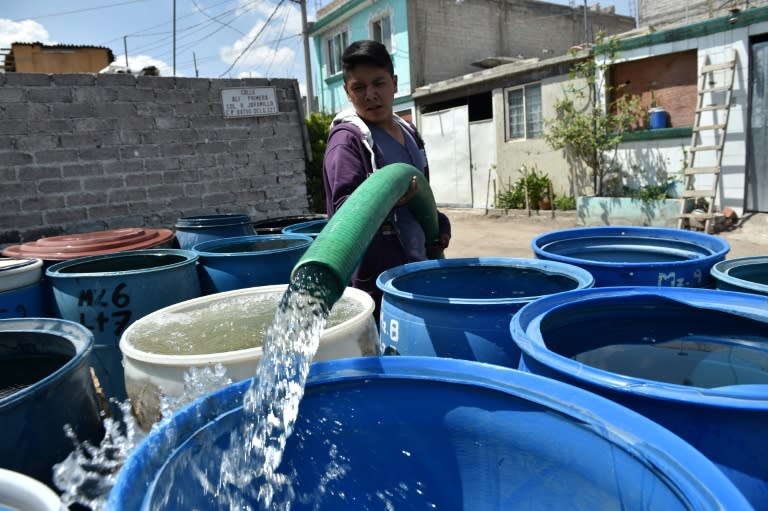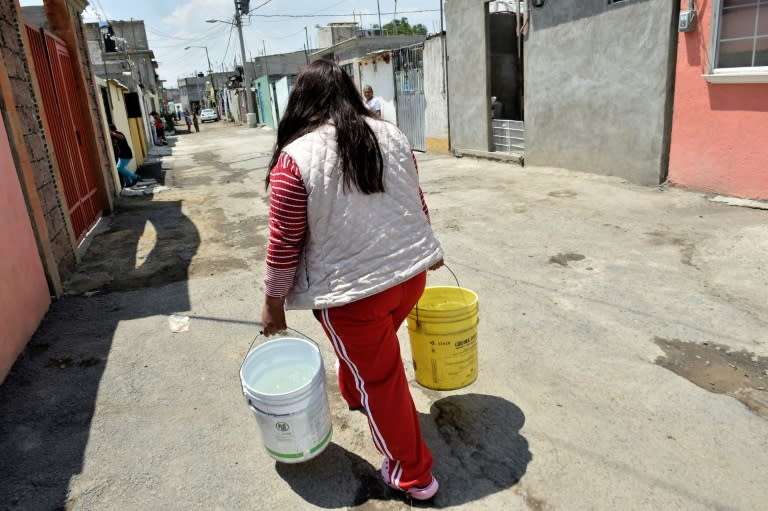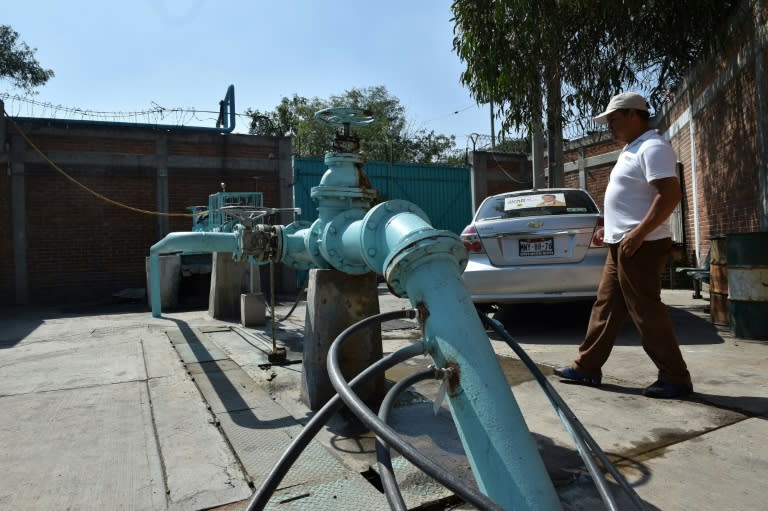In Mexico City, water a rare commodity
In a teeming, hardscrabble neighborhood on the outskirts of Mexico City, Virginia Solis spends a big part of her day hauling sloshing buckets to her home -- one of tens of thousands in the capital without running water. Solis lives in the shadow of a ruddy mountain on the sprawling city's far east side, in an impoverished district called Iztapalapa. There are no water pipes in her neighborhood. Instead, tanker trucks deliver water to a cistern at the end of her street once every three days. Solis and her neighbors then haul it home in plastic buckets. The Sisyphean work of providing her family's water supply has made her ruthlessly economical with every drop. "When water makes you suffer, you don't waste a bit of it," she said. "If I needed to flush the toilet right now, I'd wash some laundry first, then reuse the water." Her neighbor Norma Calderon oversees the neighborhood's ad hoc water delivery system. It's another thankless job. There are simply too many people lining up for every 200-liter (50-gallon) cistern filled by the tanker trucks. "One cistern is tiny. There are families here with seven, eight, nine people," she said. Iztapalapa is the poorest and most populous area in Mexico City -- 1.8 million of the capital's 8.8 million people live here. It is also the one that suffers most from a lack of water. Even in neighborhoods that have running water, it often doesn't work. But Iztapalapa isn't alone. Across the city, more than half a million homes lack a daily water supply, and nearly 50,000 have no running water. - Sinking city - Originally, Mexico City was built on a lake. Founded by the ancient Aztecs, who called it Tenochtitlan, it was constructed with a system of levees and canals. Today, five centuries after the Spanish conquest, nothing remains of the lake -- except its soft clay bed. Decades of over-tapping the city's aquifers have dehydrated that spongy foundation, squishing it down. Parts of the city are now sinking by two to 30 centimeters (three-quarters of an inch to one foot) a year, according to official data. "This problem's been around for a long time... but we've just kept putting it off," said Claudia Lartigue, a water specialist at the National Autonomous University of Mexico. The latest fix is to transport water from the state of Michoacan, 300 kilometers (nearly 200 miles) to the west, using a massive system of pumps and tunnels. Today, that supplies nearly one-third of the city's water. Pumping aquifers still supplies the rest. But nearly 40 percent of the total is lost to leaks in the city's antiquated system of pipes, according to the municipal water authority. - Tankers under escort - Tanker trucks, which started as an emergency solution, have become a daily supply source. "We've become a vital link" in the system, said Alberto Sanchez, who manages one of the wells where the trucks fill up. After filling his 40,000-liter truck beneath a giant black hose, driver Emilio Santos explained his dangerous job as he made his deliveries. Sometimes, when a neighborhood has gone days without water, "people climb up on the truck with sticks and stones" to force him to deliver to their street first, he said. In some cases, such attackers have carried guns. Police now escort trucks along the most dangerous routes. In 2009, Mexico City launched a leak control and infrastructure renewal plan to cut down on waste in the system. But the funding soon ran out. The plan is now moving ahead "bit by bit," said Mauricio Hernandez, technical director for the city water system. Citizens need a wake-up call on water use, he said. The average Mexico City resident uses 250 liters a day, more than double the rest of the nation's cities. But any solution will have to be multi-dimensional, said Lartigue: rein in urban sprawl, eliminate leaks, harvest rainwater and allow depleted aquifers to replenish. Until that happens, families like Virginia Solis's are stuck waiting for the tanker truck to arrive.





